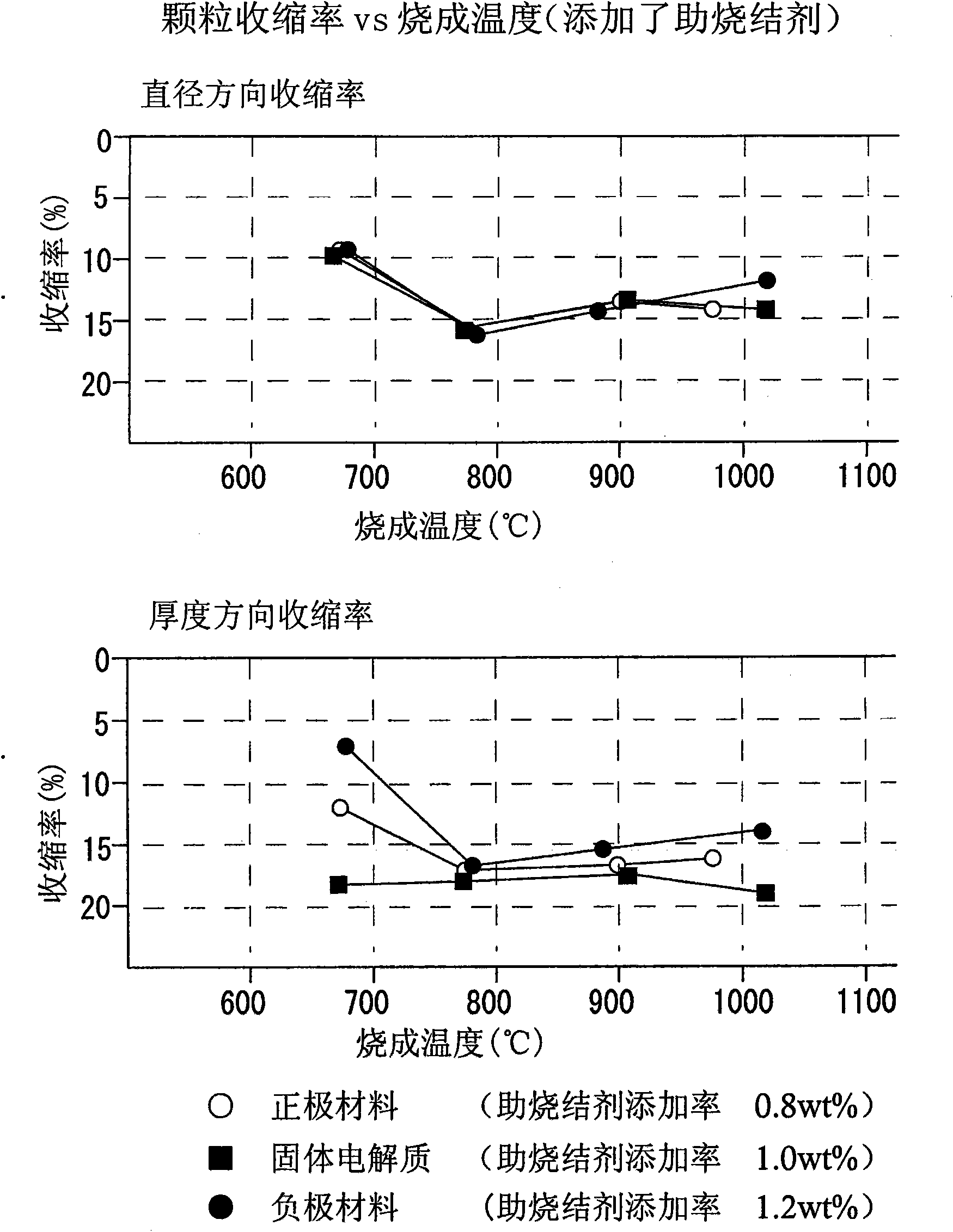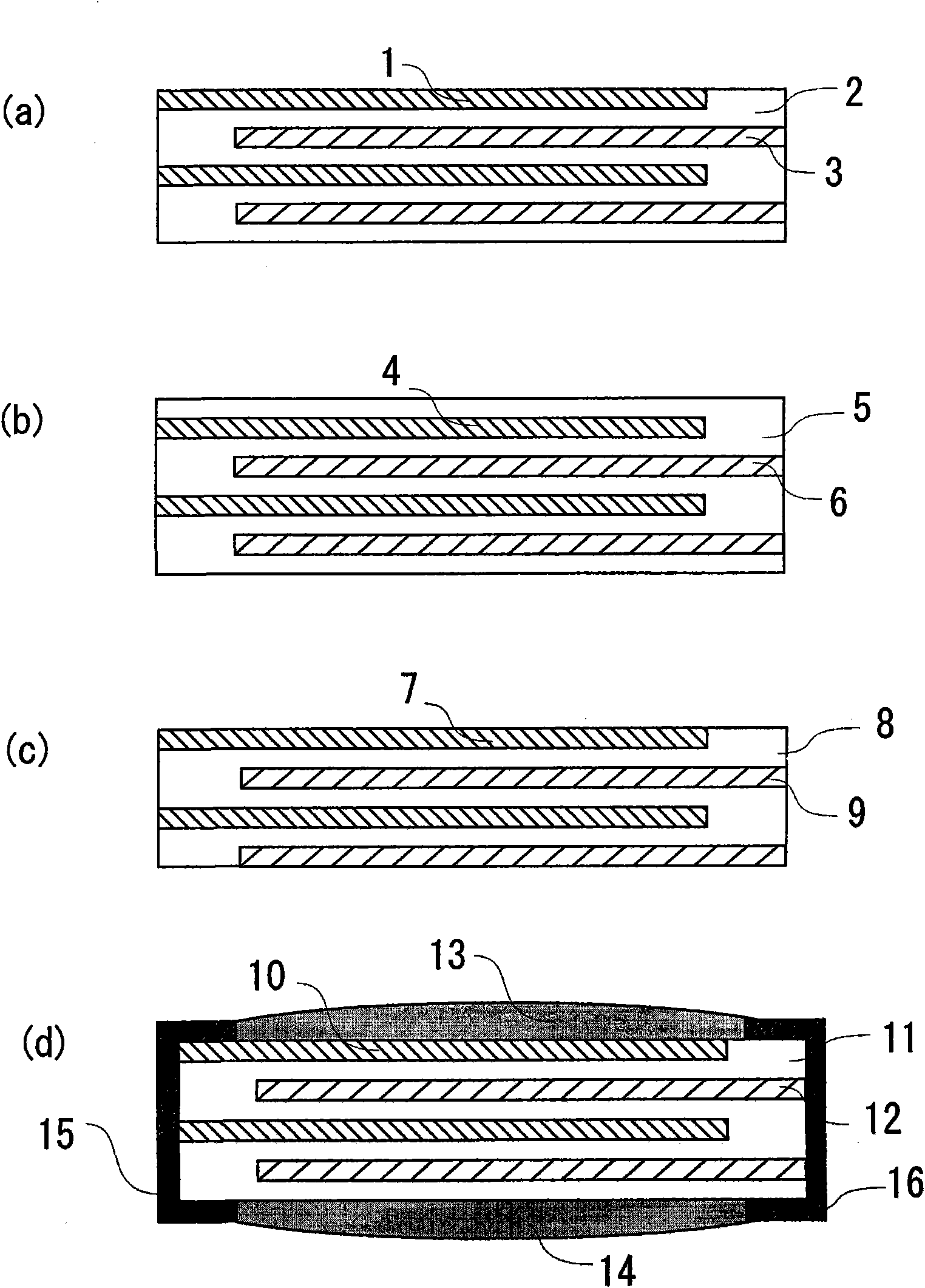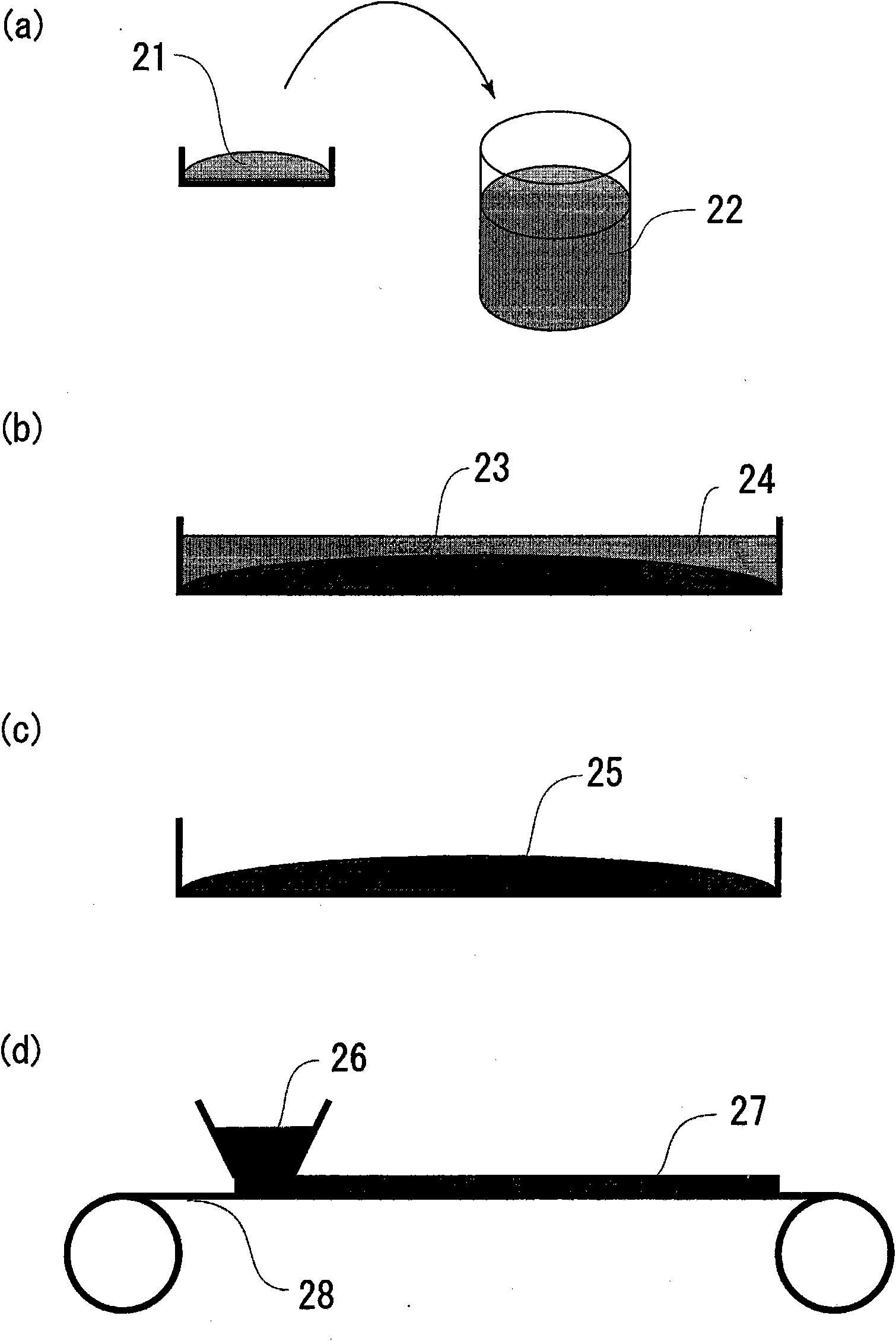Lithium ion rechargeable battery and process for poducing the rechargeable battery
A technology for secondary batteries and manufacturing methods, applied in secondary batteries, electrode manufacturing, battery electrodes, etc., can solve the problems of peeling of the bonding interface, inability to manufacture high-performance batteries, and inability to densify various components, and prevent delamination. layer, the effect of realizing high performance and reducing material cost
- Summary
- Abstract
- Description
- Claims
- Application Information
AI Technical Summary
Problems solved by technology
Method used
Image
Examples
Embodiment
[0108] [Adjust shrinkage by adding sintering aid]
[0109] A sintering aid is added to the positive electrode material, solid electrolyte material, and negative electrode material constituting the lithium-ion secondary battery to produce pellets, and the shrinkage of the pellets caused by firing is measured, and the cross-section is observed by SEM.
[0110] (production of samples)
[0111] The samples used this time are figure 1 The shrinkage shown was evaluated for the same specimens tested. The method of preparing the sample will be described in more detail below.
[0112] The positive electrode material is represented by the chemical formula as LiMnO 2 The substance, MnCO manufactured by Chuo Denki Kogyo 3 ・(C2-SP) and Li manufactured by Nippon Chemical Industries 2 CO 3 It was synthesized as a raw material and pre-baked at 800° C. for 2 hours. The solid electrolyte material is represented by the chemical formula Li 7 PSiO 8 The substance, Li manufactured by Wako ...
PUM
| Property | Measurement | Unit |
|---|---|---|
| thickness | aaaaa | aaaaa |
Abstract
Description
Claims
Application Information
 Login to View More
Login to View More - R&D
- Intellectual Property
- Life Sciences
- Materials
- Tech Scout
- Unparalleled Data Quality
- Higher Quality Content
- 60% Fewer Hallucinations
Browse by: Latest US Patents, China's latest patents, Technical Efficacy Thesaurus, Application Domain, Technology Topic, Popular Technical Reports.
© 2025 PatSnap. All rights reserved.Legal|Privacy policy|Modern Slavery Act Transparency Statement|Sitemap|About US| Contact US: help@patsnap.com



